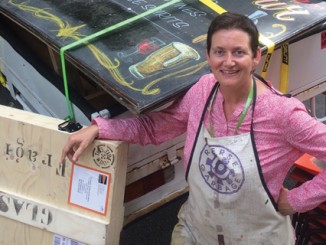Don’t you just love driving around the Inner West during school holidays? There is less traffic, drivers have less road rage, and your stress levels come down. Why are there so many more cars on the road during school terms and why is this type of car dependency such a problem?
Local congestion on Inner West roads is reduced between 5% and 10% during school holidays (depending on the type of holiday). This may not seem like a lot, but during peak periods, it makes a big difference. According to Phil Akers, General Manager of the Transport Management Centre, on holidays, people also tend to avoid peak periods when driving locally. Having your kids at home means that you can schedule your day around your family and not the 9am siren. There was an 8% reduction on Victoria road, Rozelle during the Anzac Day long weekend which meant cars were even able to beat the 501.
Some of the school term traffic can be attributed to parents driving their kids to school. Congestion between 8am and 9.30am is chronic on most Inner West arterials. Even “rat-runs” are starting to become more popular (the back streets used to avoid traffic jams). Some schools, such as Ashfield Boys High and Fort Street High, offer a school bus service but not nearly enough is being done to get kids to school safely and reduce the number of the cars on the road during peak times.
Canada Bay Council’s recent introduction of the “Walking Bus” is a brilliant example of the small local steps schools and councils can take to reduce traffic congestion. The “Walking Bus” also helps create a social platform for traveling children while giving them their independence.
A Walking School Bus is a group of primary school children who walk to and from school along a safe set route, accompanied by a parent who ‘drives’ the bus, and a parent who supervises at the rear.
The walking bus picks up ‘passengers’ along the way at designated ‘bus stops’. This initiative will roll out over the next few years and with any luck, neighbouring councils will also trial the program.
While organisations such as NRMA are focused on fixing Sydney’s road congestion problems with suggestions such as “more flexible working hours” and even schools trialling later start times, they do not address the fundamental issue of why do we need to drive at all? Is our car addiction a result of necessity or laziness?
The 2010 Transport Roads and Maritime Services, Trip Generation Guide, reported that the Inner West’s daily vehicle trips were 10.7 per dwelling. This seems like a very high number but probably helps explain why there are always so many cars on the road. If even just two trips were eliminated (by getting kids to catch the Walking Bus), traffic congestion would be eased. Of course it is not the responsibility of schools and councils to solve Sydney’s transport problems. Serious infrastructure (bike paths, decent rail and roads), intelligent traffic controls (with spatial and temporal responses) and a cultural shift away from car addiction should be a part of our transport vision.
Words: Cindy Mullen


Leave a Reply
You must be logged in to post a comment.